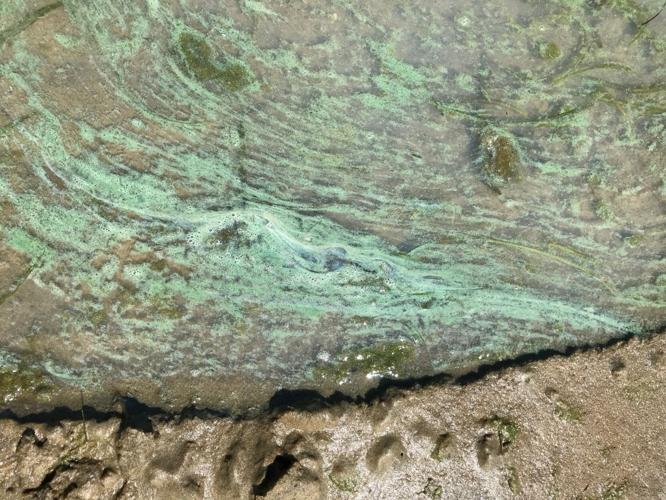BEEKMANTOWN — On August 1, a harmful bloom of freshwater cyanobacteria was found at Point au Roche State Park and documented by citizen volunteers via signs and its location on the Department of Conservation’s website.
Cyanobacteria is a form of harmful blue-green algae that produces neurotoxins strong enough to kill animals and cause great sickness to humans, according to the Environmental Protection Agency’s website.
Harmful algal blooms leave a greenish-colored scum or mat around the edge of a body of water, but not all greenish-colored algae found in recreational lakes and ponds are toxic.
According to Director of the Lake Champlain Basin Program Eric Howell, this is why it is so important to train citizen volunteers, who are the bulk of individuals reporting cyanobacteria blooms, to know the difference between a harmful algal bloom and a benign one.
“This is important for a number of reasons,” Howell said. “Citizen volunteers help to document the prevalence of blooms as well as put out a public health notice.”
The Lake Champlain Basin Program funds the Lake Champlain Committee through grants. Lori Fisher is the volunteer coordinator and trainer with the committee and has shown through her course comprised of videos and photos the difference between harmful and regular algal blooms, as well as where to look for toxic algae and how to report it.
“We want the public to know when the bloom is happening and when to be concerned,” Howell said.
According to Howell, it is rare to observe blooms on the northern shoreline. It is however not rare to observe harmful blooms more frequently in late summer.
“My general words of advice are that blooms can come and go fairly quickly. Even if it says it’s safe to recreate, people should always make their own observations,” Howell said.
Lake Champlain has held a temperature of 70 degrees and above since June, which according to Howell can accelerate the growth of nutrients, especially phosphorus and nitrogen, which sustain the growth of harmful cyanobacteria.
If you find a bloom that looks harmful, the DEC encourages you to report it so they can upload it to their cyanobacteria tracker. Check to see where harmful blooms are in your area online at tinyurl.com/y3tmeg8t.
Email Sage Lewandowski
Twitter: @sagelewandowsk1






























Commented
Sorry, there are no recent results for popular commented articles.